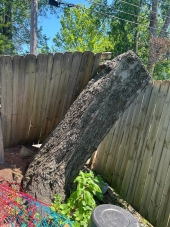
 3
3




Check out Redhawk's soil series: https://permies.com/wiki/redhawk-soil
 2
2




New location. Zone 6b, acid soil, 30+ inches of water per year.
https://growingmodernlandraces.thinkific.com/?ref=b1de16
Growingmodernlandraces.com affiliate
 3
3




Ry & Dre Oeschger




Check out Redhawk's soil series: https://permies.com/wiki/redhawk-soil




Invasive plants are Earth's way of insisting we notice her medicines. Stephen Herrod Buhner
Everyone learns what works by learning what doesn't work. Stephen Herrod Buhner




Check out Redhawk's soil series: https://permies.com/wiki/redhawk-soil
 5
5




Herbal practitioner and author writing about sustainable harvest and use of medicinal trees and shrubs in a temperate climate. See her Medicinal Tree Woman newsletter at annestobart.substack.com.
 1
1




New location. Zone 6b, acid soil, 30+ inches of water per year.
https://growingmodernlandraces.thinkific.com/?ref=b1de16
Growingmodernlandraces.com affiliate
 2
2




“When the last tree is cut, the last fish is caught, and the last river is polluted; when to breathe the air is sickening, you will realize, too late, that wealth is not in bank accounts and that you can’t eat money.” -Alanis Obomsawin
http://strawberrymoonfarm.com/




Check out Redhawk's soil series: https://permies.com/wiki/redhawk-soil
 3
3





Herbal practitioner and author writing about sustainable harvest and use of medicinal trees and shrubs in a temperate climate. See her Medicinal Tree Woman newsletter at annestobart.substack.com.
 3
3




 5
5




Check out Redhawk's soil series: https://permies.com/wiki/redhawk-soil
 3
3




 1
1




Check out Redhawk's soil series: https://permies.com/wiki/redhawk-soil
 3
3




Once you make a decision, the universe conspires to make it happen. - Ralph Waldo Emerson




Check out Redhawk's soil series: https://permies.com/wiki/redhawk-soil
 4
4




Herbal practitioner and author writing about sustainable harvest and use of medicinal trees and shrubs in a temperate climate. See her Medicinal Tree Woman newsletter at annestobart.substack.com.
 1
1




Once you make a decision, the universe conspires to make it happen. - Ralph Waldo Emerson
 1
1




Check out Redhawk's soil series: https://permies.com/wiki/redhawk-soil
 1
1




 3
3




Herbal practitioner and author writing about sustainable harvest and use of medicinal trees and shrubs in a temperate climate. See her Medicinal Tree Woman newsletter at annestobart.substack.com.

 1
1




Hans Albert Quistorff, LMT projects on permies Hans Massage Qberry Farm magnet therapy gmail hquistorff

|
Where does a nanny get ground to air missles? Protect this tiny ad:
12 DVDs bundle
https://permies.com/wiki/269050/DVDs-bundle
|

